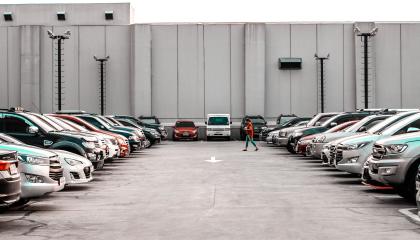The fitness benefits of a good bike ride (both physical and mental) are well known. People with physical challenges or disabilities have found that riding trails is a great way to stay fit and boost mood.
Discrimination, stigma, and stereotyping are just some of the challenges that disabled people face every single day. Beyond this viewpoint problem that society has, individuals with disabilities often struggle with a built environment that excludes them from everyday activities. So, don't you think it's high time that we change our lens on disability?
To transform into an all-inclusive society, we need to address the barriers faced by individuals with disabilities. The change will come only when we work hand in hand with the disabled community to break down these hurdles.
A workplace benefits from a diverse team because different experiences and backgrounds can provide new ideas, optimized processes, and more inclusivity.
The meaning of ‘diversity’ may vary for different individuals. It’s important to consider the fact that diversity is not confined to race, sexual orientation, and gender.
The meaning of true diversity stretches far beyond these classifications. Still, while planning their diversity strategies, employers tend to overlook people with disabilities. This results in an inaccessible workplace for such individuals.
The best way to interact with people who have disabilities is to see them the way they see themselves, which can definitely be a challenge as we exist in our own minds. Take cues from the person with disabilities. If they demonstrate a high level of independence, then don’t try to do things for them or “baby” them in any way.
If a person with disabilities requests assistance, then help. In either case, you allow them to showcase how they wish to be treated.
Here are some simple yet effective ways to empower those with disabilities.
The major barrier to communication with people with hearing loss is often the lack of consideration by others. For successful and effective communication, all parties need to be aware and considerate.
Even if a person uses a hearing aid, others taking part in the conversation must use valuable communication strategies.
First and foremost, detectable warning tiles and surfaces were designed to assist individuals with disabilities to safely navigate public spaces, and then, in 1991, the Americans with Disabilities Act (ADA) mandated the use of detectable warning tiles in public areas throughout the United States.
Individuals with disabilities must navigate a world designed for people with vision and mobility, and one tool that helps to make the world more accessible is navigational bar tiles. These directional tile surfaces consist of raised bars that align with the direction of pedestrian travel. These navigational directional bar tiles help people to locate the entrance to light rails, trains, and bus stops.
A companion to detectable warning tiles, navigational and directional bar tiles serve an essential purpose of guiding individuals with disabilities in the flow of traffic.
Traveling with a disability comes with unique opportunities and challenges, often requiring more research to find the best disability travel tips. No one should have to stay home due to a permanent or temporary condition. In fact, accessible travel is on the rise.
The travel industry offers more services and accommodations than ever before to individuals with impairments. With the internet on hand, individuals with disabilities often travel and share their own tips for getting around and exploring the world.
In the United States alone, over two million school-aged children have a disability, and studies show that this number is growing. With this population on the rise, it is important that society keeps up by providing accessible activities at every level, including in school activities and extracurricular opportunities. One of the ways that this can be done is by creating summer camps that are accessible to all children of all abilities—this helps normalize all levels of ability for all children.
Accessible parking spots are the key to mobility for individuals with disabilities who visit all of life’s essential businesses. From school to grocery shopping to entertainment, accessible parking means that everyone is welcome to enjoy living. But when it comes to accessible parking lots, it’s not a one-size-fits-all situation.
In fact, accessible parking lots often have parking that is designated for different types of vehicles. Moreover, the Americans with Disabilities Act outlines certain standards for public parking lots.
Pagination
- Previous page
- Page 2
- Next page
Connect with us
We pride ourselves on our customer service, and we'd love to hear from you! Sign up for our newsletter to keep up with industry updates and trends, as well as any new product releases.












